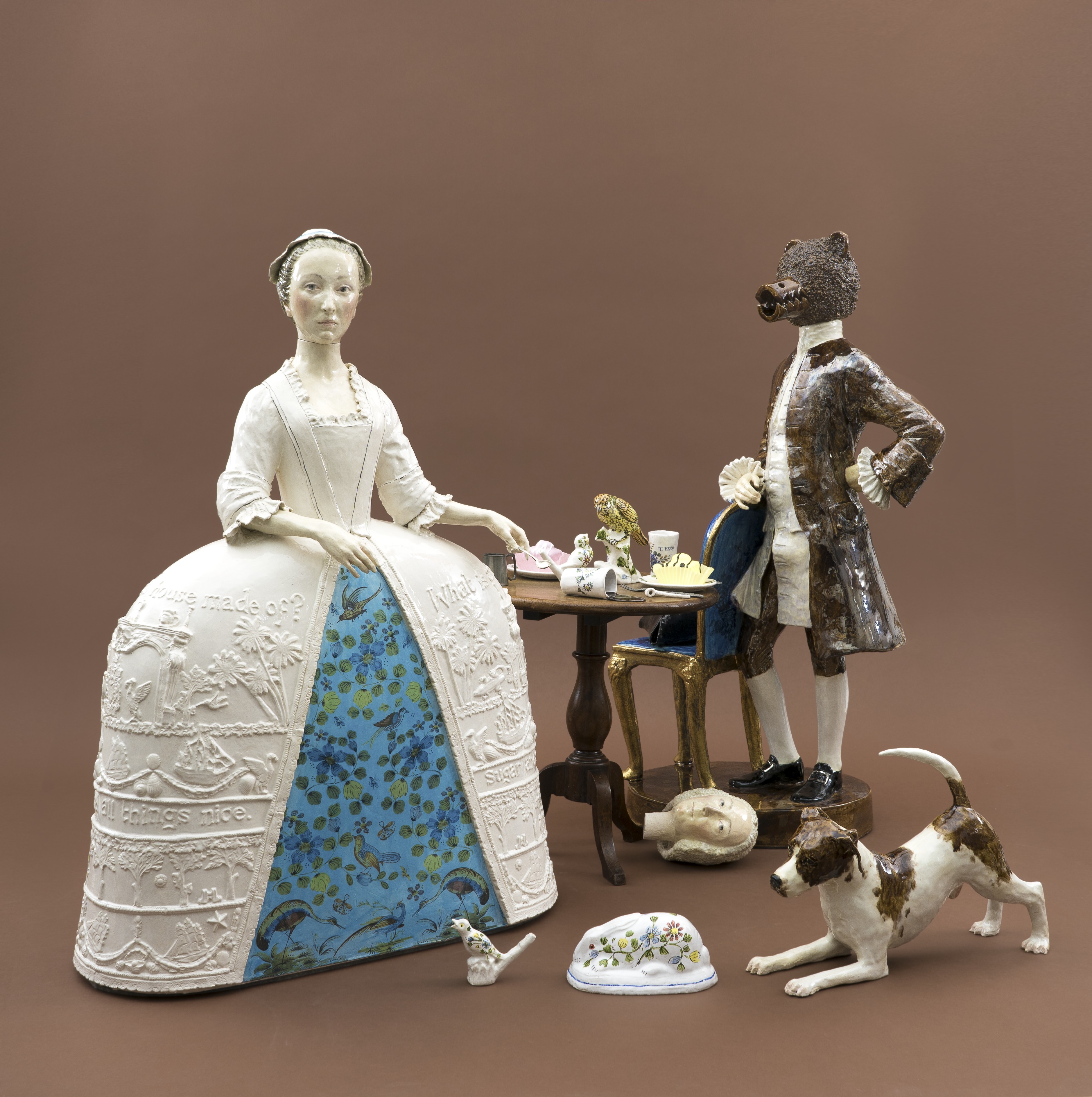Claire Partington’s original sculptures are influenced by the history of art and ceramics. Often inspired by iconic portraits, her distinctive ceramic figures prove a powerful vehicle to comment on society, both now and then. Frequently exploring myths and legends, Partington is fascinated by folklore. She also employs symbolism that repeats in her work, such as interchangeable animal heads. This device is inspired by fairy tales and the historic ceramic form of the bear jug.
The Walker Art Gallery’s collections in Liverpool inspired this new commission. Creating a strong link to the northwest, the catalyst was the oil painting, Mr and Mrs William Atherton by Arthur Devis (1712-1787). Atherton was a wealthy draper and Alderman of Preston when it was painted in 1743. Partington chose the painting for its starkness and the deadpan ambiguity of the sitters. Through the painting the couple display their wealth, in an age when modern consumerism began. The scene is carefully constructed to convey success. For What is a wealthy merchant’s house made of? (2022) Partington expands Devis’s domestic scene, taking inspiration from objects in the Walker’s collections. Liverpool was a centre for the ceramics industry in the eighteenth century, and she employs a palette synonymous with Liverpool pottery. In this work, the bear heads suggest a darker side to the life of the respectable couple. The patterns of her dress also hint at sources of merchant wealth in this era, when Liverpool and other Lancashire ports were hubs for the transatlantic slave trade.
Recent displays of contemporary craft have shown that there is demand from the Walker Art Gallery’s audience for ceramic art. The display of What is a wealthy merchant’s house made of? will provide a link between the collections of paintings and historic ceramics. Re-interpreting them in this way will engage audiences and develop the Gallery’s collections for the twenty-first century. Claire Partington’s new commission was displayed at the Walker Art Gallery, Liverpool together with works lent from the artist from June to November 2022.


